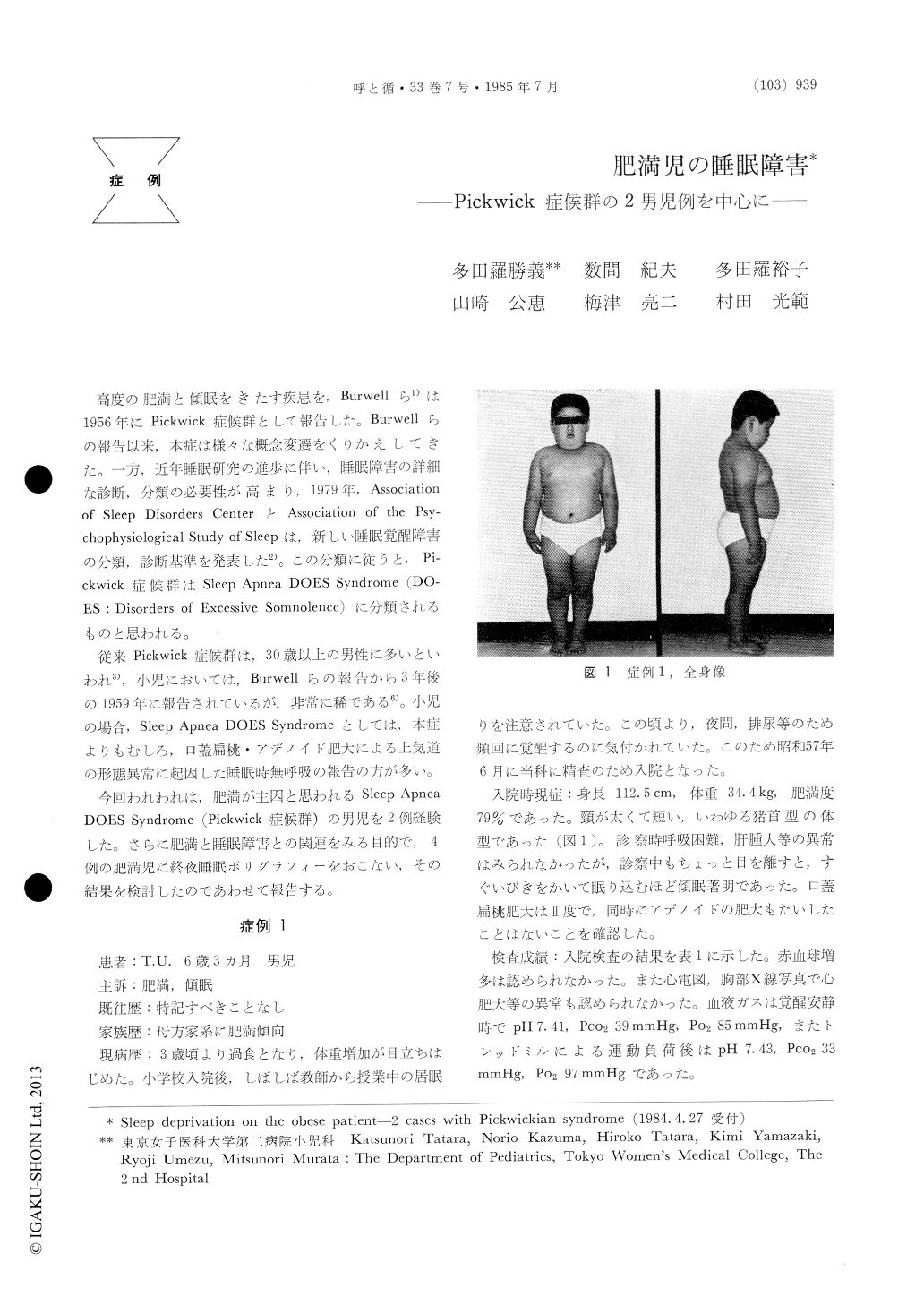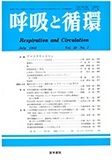Japanese
English
- 有料閲覧
- Abstract 文献概要
- 1ページ目 Look Inside
高度の肥満と傾眠をきたす疾患を,Burwellら1)は1956年にPickwick症候群として報告した。Burwellらの報告以来,本症は様々な概念変遷をくりかえしてきた。一方,近年睡眠研究の進歩に伴い,睡眠障害の詳細な診断,分類の必要性が高まり,1979年,Associationof Sleep Disorders CenterとAssociation of the Psy—chophysiological Study of Sleepは,新しい睡眠覚醒障害の分類,診断基準を発表した2)。この分類に従うと,Pi—ckwick症候群はSlcep Apnea DOES Syndrome(DO—ES:Disorders of Excessive Somnolence)に分類されるものと思われる。
従来Pickwick症候群は,30歳以上の男性に多いといわれ3),小児においては,Burwellらの報告から3年後の1959年に報告されているが,非常に稀である6)。小児の場合,Sleep Apnea DOES Syndromeとしては,本症よりもむしろ,口蓋扁桃・アデノイド肥大による上気道の形態異常に起因した睡眠時無呼吸の報告の方が多い。
Two massively obese boys with somnolence were found to have obstructive sleep apnea, and were diagnosed as Sleep Apnea DOES Syndrome (Pick-wickian Syndrome). During sleep the upper airway obstructed completely in a perodic manner, and it was produced by the tongue retracting into apposi-tion with the posterior pharyngeal wall. This was related to arousal patterns on electroencephalogram. The somnolence in these patients was caused by sleep deprivation. The clinical manifestations can be ameliorated by reduction of body weight.
Polysomnographic recording was studied in three obese boys without Pickwickian Syndrome. In most obese boy, the deep sleep stage was decreased, but after reduction of body weight, it showed improve-ment towards normal. The decreased deep sleep stage was probably due to sleep disturbance by obesity.

Copyright © 1985, Igaku-Shoin Ltd. All rights reserved.


